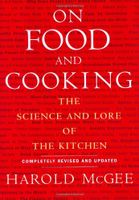Label
All
0
Clear all filters
🌷 Spring savings – save 25% on ckbk Premium Membership with code SPRING25
The Challenge of Cooking Meat: the Right Texture
Appears in
By Harold McGee
Published 2004
Generally, we like meat to be tender and juicy rather than tough and dry. The ideal method for cooking meat would therefore minimize moisture loss and compacting of the meat fibers, while maximizing the conversion of tough connective-tissue collagen to fluid gelatin. Unfortunately, these two aims contradict each other. Minimizing fiber firming and moisture loss means cooking meat quickly to no hotter than 130–140°F/55–60°C. But turning collagen to gelatin requires prolonged cooking at 160°F/70°C and above. So there is no ideal cooking method for all meats. The method must be tailored to the meat’s toughness. Tender cuts are best heated rapidly and just to the point that their juices are in full flow. Grilling, frying, and roasting are the usual fast methods. Tough cuts are best heated for a prolonged period at temperatures approaching the boil, usually by stewing, braising, or slow-roasting.
Become a Premium Member to access this page
Unlimited, ad-free access to hundreds of the world’s best cookbooks
Over 150,000 recipes with thousands more added every month
Recommended by leading chefs and food writers
Powerful search filters to match your tastes
Create collections and add reviews or private notes to any recipe
Swipe to browse each cookbook from cover-to-cover
Manage your subscription via the My Membership page
Best value
In this section
Part of
Advertisement
Related Recipes
-
-
-
-
Related Reference
-
-
-
-
Advertisement
The licensor does not allow printing of this title



